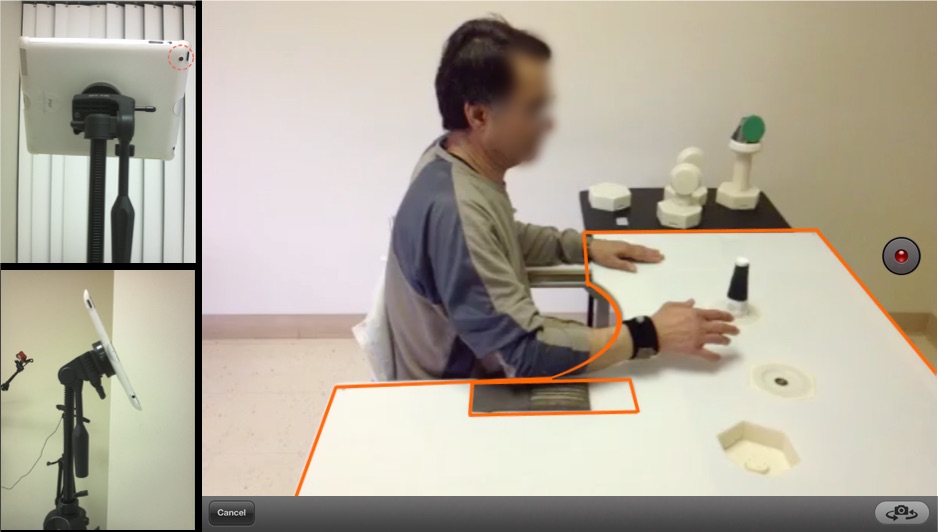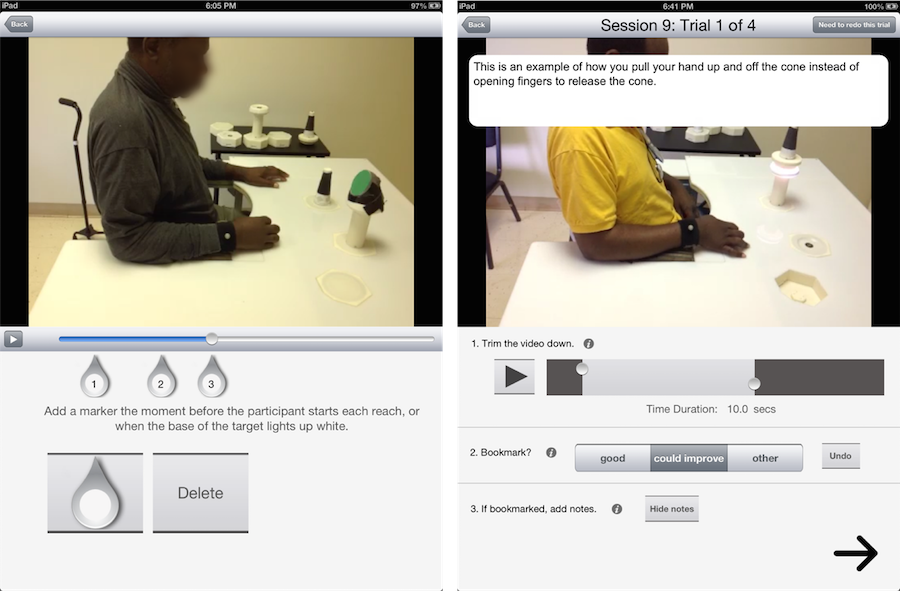The training monitoring app was used in the stroke rehabilitation research described here to help the physical therapist capture and share progress of participants across several weeks of training.
Each week the therapist recorded videos of the participant completing different tasks. An outline of the table was overlaid on the live camera feed to help the therapist quickly position the iPad consistently for each capture.

The therapist later segmented each video of multiple reaches, first at a coarse level (shown on the left below) and then on a fine level (shown on the right below), by adjusting the start and stop time for each reaching trial. The therapist could also bookmark and annotate videos to show to the participant later.

Bookmarked videos could then be organized into a video series created by the therapist to demonstrate progress to the participant.

The app also provided a means for collecting therapist ratings on movement quality after watching each video. This data was collected to explore the relationship between kinematics measured by the interactive system and observation-based assessment, which are further explored by the papers listed below.
Related papers on movement data collected from app
-
V Venkataraman, P Turaga, M Baran, N Lehrer, T Du, C Long, T Rikakis, SL Wolf, “Component-level Tuning of Kinematic Features from Composite Therapist Impressions of Movement Quality”, IEEE Journal of Biomedical and Health Informatics, Nov 2014. pdf
-
V Venkataraman, P Turaga, N Lehrer, M Baran, T Rikakis, and SL Wolf, “Decision Support for Stroke Rehabilitation Therapy via Describable Attribute-based Decision Trees”, International Conference of the IEEE Engineering in Medicine and Biology Society, Aug. 2014. pdf